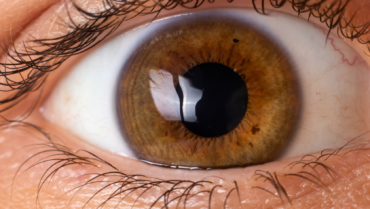

Predictability of Refractive Outcome of a Small-Aperture Intraocular Lens in Eyes With Irregular Corneal Astigmatism
Langer J, Shagari M, Kreutzer T, Priglinger S, Mayer WJ, Mackert MJ1
Industry support: None
ABSTRACT SUMMARY
A single-center study compared new-generation biometric formulas and ray tracing for a small-aperture IOL (IC-8 Apthera, Bausch + Lomb) in 17 eyes of 17 patients with highly irregular corneas. Biometric and tomographic data were assessed with an IOLMaster 700 (Carl Zeiss Meditec) and a Pentacam (Oculus Optikgeräte). After 3 months, prediction and absolute error were compared based on manifest refraction. Changes in total corneal refractive power were evaluated across various corneal pathologies. Corneal irregularities were due to keratoconus, prior penetrating keratoplasty or radial keratotomy surgery, and corneal scarring after keratitis or ocular trauma. The average total higher-order aberration root mean square was 0.75 ±0.91 μm.
Study in Brief
A single-center study found that a small-aperture IOL (IC-8 Apthera, Bausch + Lomb) provided predictable visual outcomes in eyes with highly irregular corneas and that the Haigis formula was most accurate in this setting.
WHY IT MATTERS
Accurately predicting refractive outcomes after cataract surgery in eyes with highly irregular corneas is challenging, and refractive surprises occur. The IC-8 may be an effective means of reducing irregular corneal astigmatism and improving visual outcomes in this patient population.
Three fourth-generation IOL power calculation formulas (Haigis, SRK-T, and Barrett Universal II) were compared. The dataset was also checked against ray tracing to improve prediction accuracy for highly irregular corneas.
All patients experienced improved visual acuity (mean spherical equivalent, -1.22 ±0.49 D) after surgery. The Haigis formula was the most accurate of the three; it was associated with the smallest deviation of predictive and absolute errors. Ray tracing was performed in all eyes but yielded inaccurate results in those whose keratometry values exceeded 48.00 D.
DISCUSSION
Precisely predicting refractive outcomes in cataract surgery for eyes with highly irregular corneas is challenging. The latest IOL formulas and diagnostic devices take corneal thickness and the posterior corneal surface into account to improve accuracy.
Biometric formulas use anterior surface–based keratometry as an approximate calculation, but its accuracy is reduced because measurements of the posterior corneal surface are estimates. Ray tracing provides a more complex, real simulation of the human eye that calculates IOL power according to Snell’s law. The technique uses measured parameters such as the slopes of anterior and posterior corneal surfaces and the precise geometric characteristics of the IOL.2 Studies, however, have shown no significant difference in absolute error in IOL calculation with ray tracing compared to biometric formulas in normal eyes.3
Savini et al reported that the SRK/T formula was most accurate for eyes with keratoconus stages 1 and 2 but that results were unpredictable for eyes with stage 3 disease.4 Langer et al found that the Haigis and SRK/T formulas were effective, but the results may differ owing to the small sample size and the various causes of corneal irregularity.1 Ray tracing and biometric formulas can produce significantly different results in eyes with severe corneal irregularity owing to variations in measurement quality. The repeatability of measurements with the Pentacam, on which ray-tracing calculations are based, is not well established. Caution is warranted when keratometry readings exceed 48.00 D.
The IC-8 Apthera is the first small-aperture IOL available in the United States. The lens extends depth of focus and reduces the impact of optical aberrations. Its 3.23-mm annular dark mask blocks unfocused paracentral light, and a central, clear 1.36-mm aperture allows paraxial light through to provide patients with clear vision across a range of distances. The IC-8 therefore represents an alternative approach to improving the visual acuity of patients with irregular corneas.5,6
The study by Langer et al1 suggests that the IC-8 can provide good refractive outcomes in these eyes. The research has some limitations, including a small sample size (as mentioned earlier) and a retrospective design. The study nevertheless provides useful insight into the small-aperture IOL’s performance in eyes with irregular corneal astigmatism. Large population-based studies comparing biometric formulas and ray tracing are required to determine how to deliver the best refractive results to this subset of patients.
Centration and Stability of Small-Aperture Intraocular Lens in Aberrated Eyes
Yang LWY, Ong HS, Chiam N, Mehta JS7
Industry support: None
ABSTRACT SUMMARY
A prospective study investigated visual outcomes with and the postoperative stability of the IC-8 Apthera IOL after laser cataract surgery with a 5-mm capsulotomy. The IOL was implanted in the nondominant eye of 12 patients. A monofocal IOL was placed in their dominant eye. Ten eyes had a history of refractive surgery.
Study in Brief
A prospective study examined the centration and stability of a small-aperture IOL (IC-8 Apthera, Bausch + Lomb) and found that it could attain good centration and positional stability for up to 3 months after implantation.
WHY IT MATTERS
A small-aperture IOL that remains stable and well centered within the central aperture could expand the range of treatment options available to patients with optical aberrations.
Lens centration and visual acuity were assessed up to 3 months postoperatively (POM3). Investigators evaluated intraoperative photographs obtained from surgical videos and postoperative photographs taken of the external eye with a slit-lamp camera after pharmacologic mydriasis. Absolute, horizontal, and vertical displacement of the IOL was measured in relation to the center of the capsulotomy and the limbus.
No significant differences in centration were found postoperatively compared to intraoperatively. The IOL remained within the 1.36-mm aperture. From intraoperatively to POM3, mean IOL displacement was 0.17 ±0.09 and 0.14 ±0.07 mm (P = .52) relative to the capsulotomy and 0.28 ±0.22 and 0.25 ±0.14 mm relative to the limbus (P = .62), respectively. Patients’ uncorrected distance visual acuity improved significantly from preoperatively to POM3 (efficacy index, 0.80 ±0.31). There were no adverse events. At POM3, all patients had a binocular uncorrected distance visual acuity of 20/25 or better and uncorrected intermediate and near visual acuities of N6 (J3) or better.
DISCUSSION
IOL decentration can reduce patients’ visual acuity.8 This is particularly relevant for the IC-8 because its small-aperture optic requires precise centration to function optimally. Earlier studies evaluated visual outcomes with the IC-8, but none to date has examined the stability of its centration.9,10 This study7 contributes to a growing body of evidence on the lens and its potential value for patients seeking spectacle independence.
Yang et al found that centration and stability of the IC-8 was adequate at POM 3 and that the lens provided an extended depth of focus and tolerated aberrations. They concluded that the IC-8 is a viable option for correcting presbyopia and improving visual function. Further studies with larger sample sizes and longer follow-up periods are necessary to confirm the findings and evaluate long-term outcomes.
1. Langer J, Shajari M, Kreutzer T, Priglinger S, Mayer WJ, Mackert MJ. Predictability of refractive outcome of a small-aperture intraocular lens in eyes with irregular corneal astigmatism. J Refract Surg. 2021;37(5):312-317.
2. Tonn B, Klaproth O, Kohnen T. Anterior surface-based keratometry compared with Scheimpflug tomography-based total corneal astigmatism. Invest Ophthalmol Vis Sci. 2014;56(1):291-298.
3. Hoffmann PC, Lindemann CR. Intraocular lens calculation for aspheric intraocular lenses. J Cataract Refract Surg. 2013;39(6):867-872.
4. Savini G, Abbate R, Hoffer KJ, et al. Intraocular lens power calculation in eyes with keratoconus. J Cataract Refract Surg. 2019;45(5):576-581.
5. Grabner G, Ang RE, Vilupuru S. The small-aperture IC-8 intraocular lens: a new concept for added depth of focus in cataract patients. Am J Ophthalmol. 2015;160(6):1176-1184.e1.
6. Shajari M, Mackert MJ, Langer J, et al. Safety and efficacy of a small-aperture capsular bag-fixated intraocular lens in eyes with severe corneal irregularities. J Cataract Refract Surg. 2020;46(2):188-192.
7. Yang LWY, Ong HS, Chiam N, Mehta JS. Centration and stability of small-aperture intraocular lens in aberrated eyes. J Refract Surg. 2022;38(2):98-105.
8. Okada M, Hersh D, Paul E, van der Straaten D. Effect of centration and circularity of manual capsulorrhexis on cataract surgery refractive outcomes. Ophthalmology. 2014;121(3):763-770.
9. Dick HB, Piovella M, Vukich J, Lin L; Clinical Investigators. Prospective multicenter trial of a small-aperture intraocular lens in cataract surgery. J Cataract Refract Surg. 2017;43(7):956-968.
10. Hooshmand J, Allen P, Huynh T, et al. Small aperture IC-8 intraocular lens in cataract patients: achieving extended depth of focus through small aperture optics. Eye (Lond). 2019;33(7):1096-1103.




